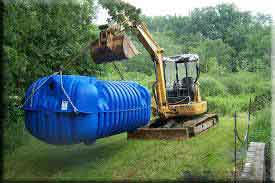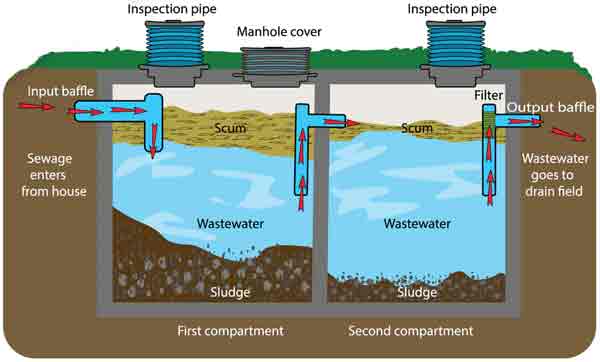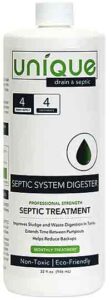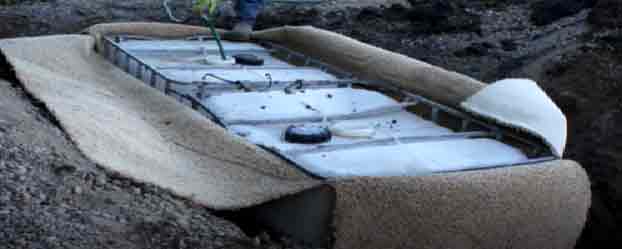Septic Systems
A composting toilet may not be an option for you. Just dumping your grey water on the ground will cause you issues in the long run. If you don’t want to run amok of the law check with your county’s Planning and Zoning officials even before you buy the land and evaluate the cost.

Septic tank moved into position.
Here is a great description of a septic system from the EPA website:
“Septic systems are underground wastewater treatment structures, commonly used in rural areas without centralized sewer systems. They use a combination of nature and proven technology to treat wastewater from household plumbing produced by bathrooms, kitchen drains, and laundry.
Typical Septic Systems
A typical septic system consists of a septic tank and a drainfield, or soil absorption field.
The septic tank digests organic matter and separates floatable matter (e.g., oils and grease) and solids from the wastewater. Soil-based systems discharge the liquid (known as effluent) from the septic tank into a series of perforated pipes buried in a leach field, leaching chambers, or other special units designed to slowly release the effluent into the soil or surface water.
Alternative systems use pumps or gravity to help septic tank effluent trickle through sand, organic matter (e.g., peat and sawdust), constructed wetlands, or other media to remove or neutralize pollutants like disease-causing pathogens, nitrogen, phosphorus, and other contaminants. Some alternative systems are designed to evaporate wastewater or disinfect it before it is discharged to the soil or surface waters.”
Your local Planning & Zoning officials will dictate the size of the tank the leach field depending on how many toilets and sinks will be in the house. Tanks and leach fields can take up a major share of your property and cost tens of thousands of dollars. Consider the costs carefully and plan accordingly.
Here is the best YouTube® video about septic systems:
Basic Septic tank diagram


Each tank in a two-tank septic system requires beneficial bacteria inside your tank begin to break it down. During the breakdown process, waste is separated into scum and sludge.
Care must be taken not to destroy the beneficial bacteria by putting harmful chemicals down your drain.
The beneficial bacteria can be reinvigorated by adding a few ounces of Unique Septic System Digester each month.
Visit this page for another good video on a DIY septic system.


